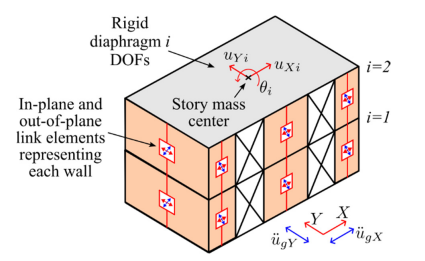Sebastián Calderón, Benjamín Ruz, Rosita Jünemann, Cristián Jaque, Cristián Sandoval, Pablo Heresi, Gonzalo Montalva, Felipe Leyton
i Assistant Professor, Universidad de Concepción, Chile, sebastian.calderon@udec.cl
ii Masters’ student, Universidad de Concepción, Chile, bruz2018@udec.cl
iii Assistant Professor, Pontificia Universidad Católica de Chile, Chile, rjunemann@uc.cl
iv Masters’ student, Pontificia Universidad Católica de Chile, Chile, cjaquep@uc.cl
v Associate Professor, Pontificia Universidad Católica de Chile, Chile, Cristian.sandoval@uc.cl
vi Assistant Professor, Universidad de Chile, Chile, pheresi@uchile.cl
vii Associate Professor, Universidad de Concepción, Concepción, gmontalva@udec.cl
viii Researcher, Centro Sismológico Nacional, Universidad de Chile, Chile, leyton@csn.uchile.cl
ABSTRACT
In Chile, a great part of residential buildings are made of masonry, many of them reinforced or confined, partially grouted, and typically up to four stories high. In general, these buildings are structured in walls, making them very stiff and prone to fail in shear when subjected to lateral loads. This type of failure is of particular interest in the country due to its high seismic activity, implying that evaluating the seismic vulnerability of this type of building has always been a concern. Despite this, performing vulnerability evaluations of this type of building is uncommon in the country. Different approaches have been proposed to perform vulnerability analyses and evaluate the response of a building under different earthquake scenarios and its most damage-susceptible structural elements. Recent studies have implemented numerical models to assess the seismic vulnerability of multi-story buildings, although these studies only focus on the performance of fully grouted masonry structures. The grouting type in masonry significantly impacts the material’s behavior and performance, meaning that appropriate models must be developed for assessing partially grouted masonry. In response to this gap, a case study four-story concrete masonry unit reinforced masonry building is numerically modeled to evaluate its structural vulnerability. The model is implemented in OpenSees. The shear wall elements were simulated employing a non-linear macro model, which was validated against experimental results of walls available in the literature. Once the suitability of the modeling approach for each structural element was validated, their assembly representing the whole case study structure was employed to run nonlinear incremental dynamic analysis. The obtained results at the shear wall element level show the suitability of the approach, and the results at the whole structure model are coherent with failures reported in post-earthquake field inspections.
KEYWORDS: Nonlinear modeling, incremental dynamic analysis, concrete masonry unit, structural vulnerability.
087-Calderon.pdf



